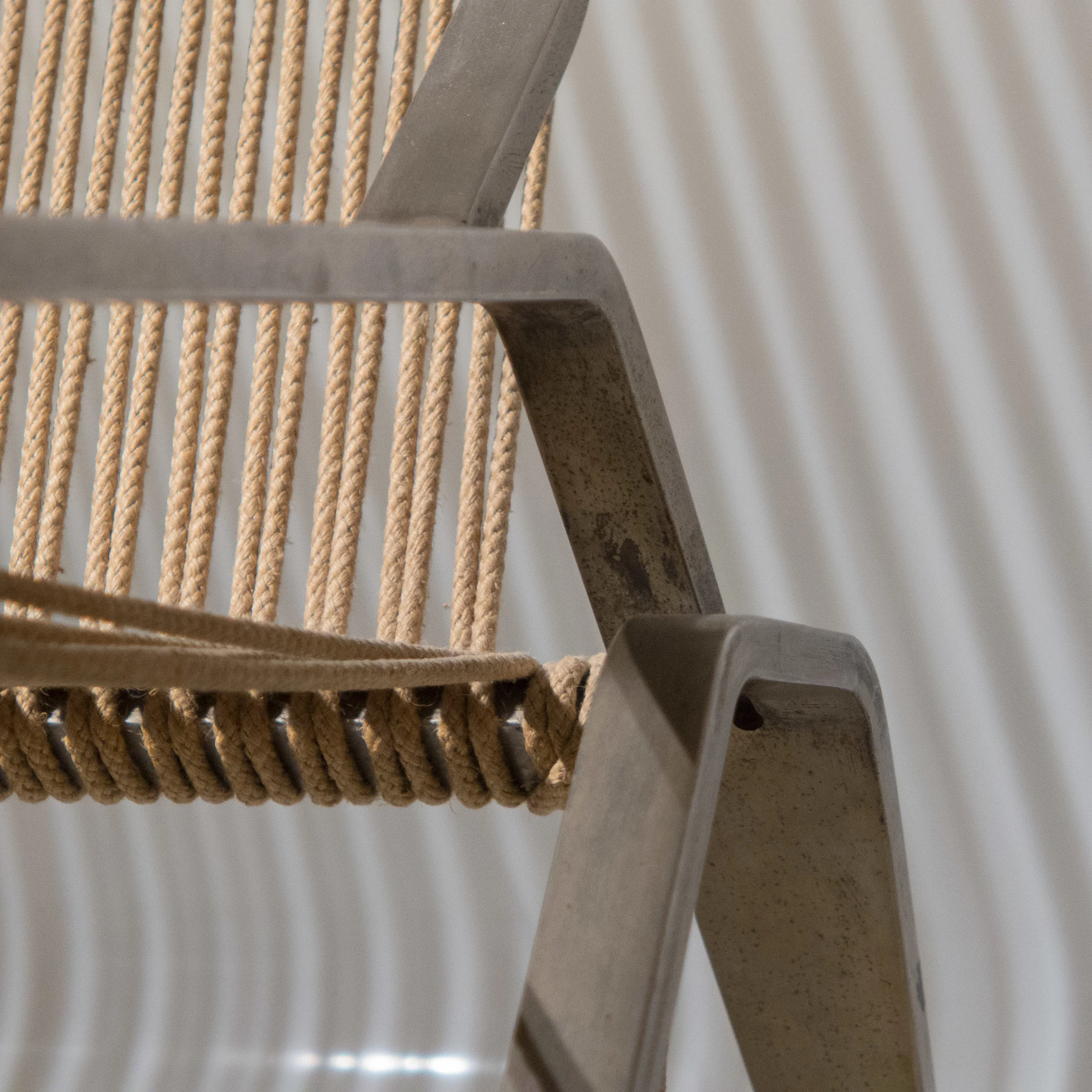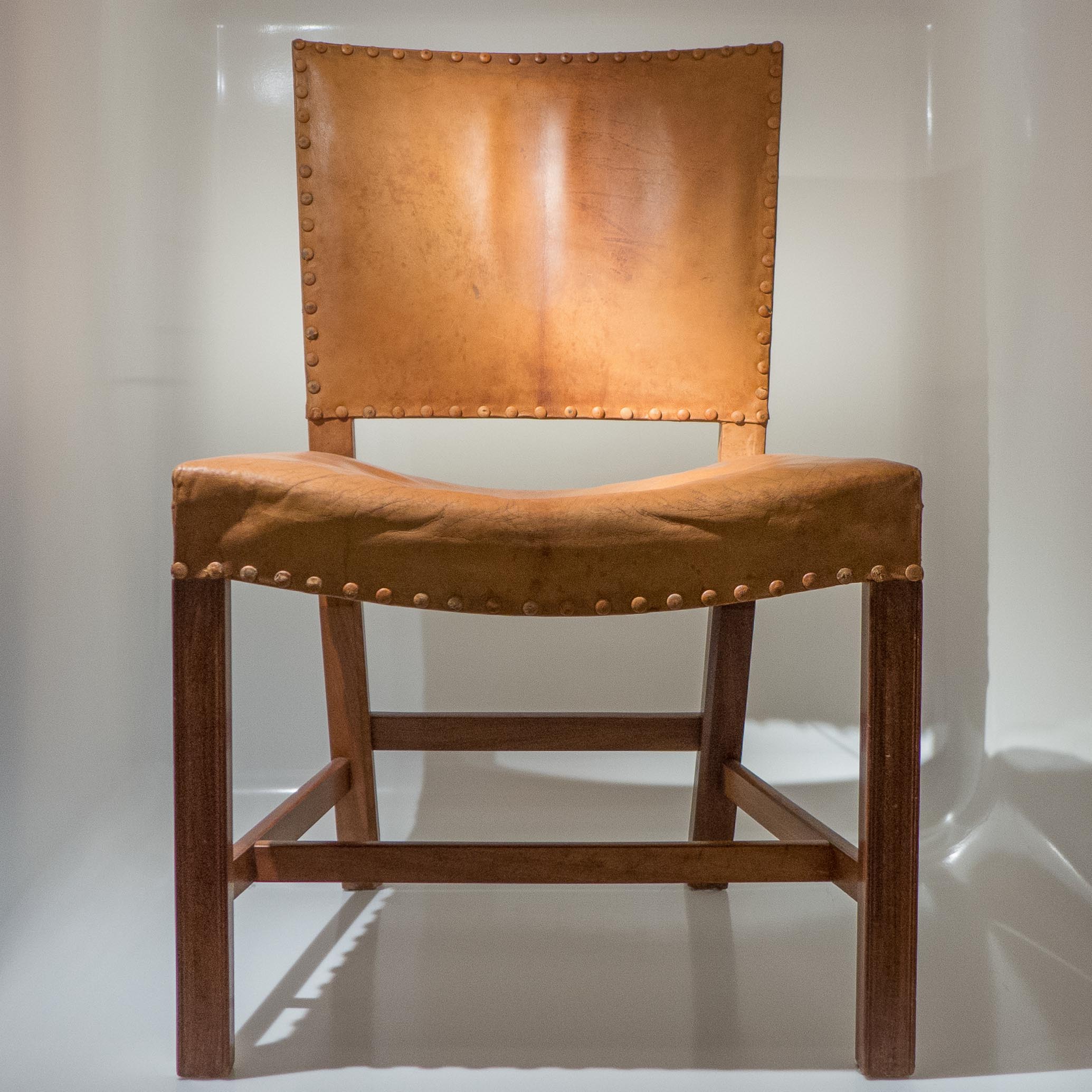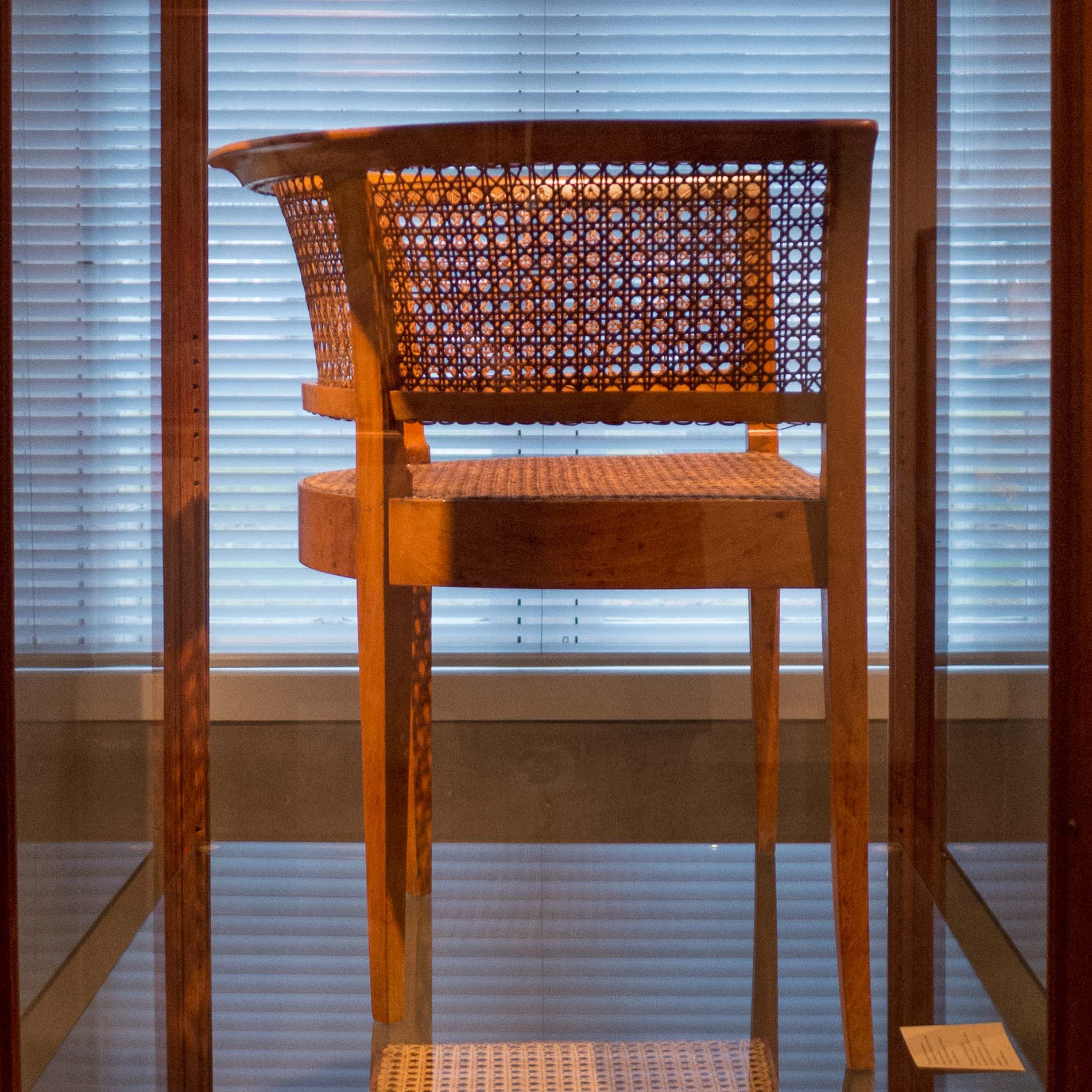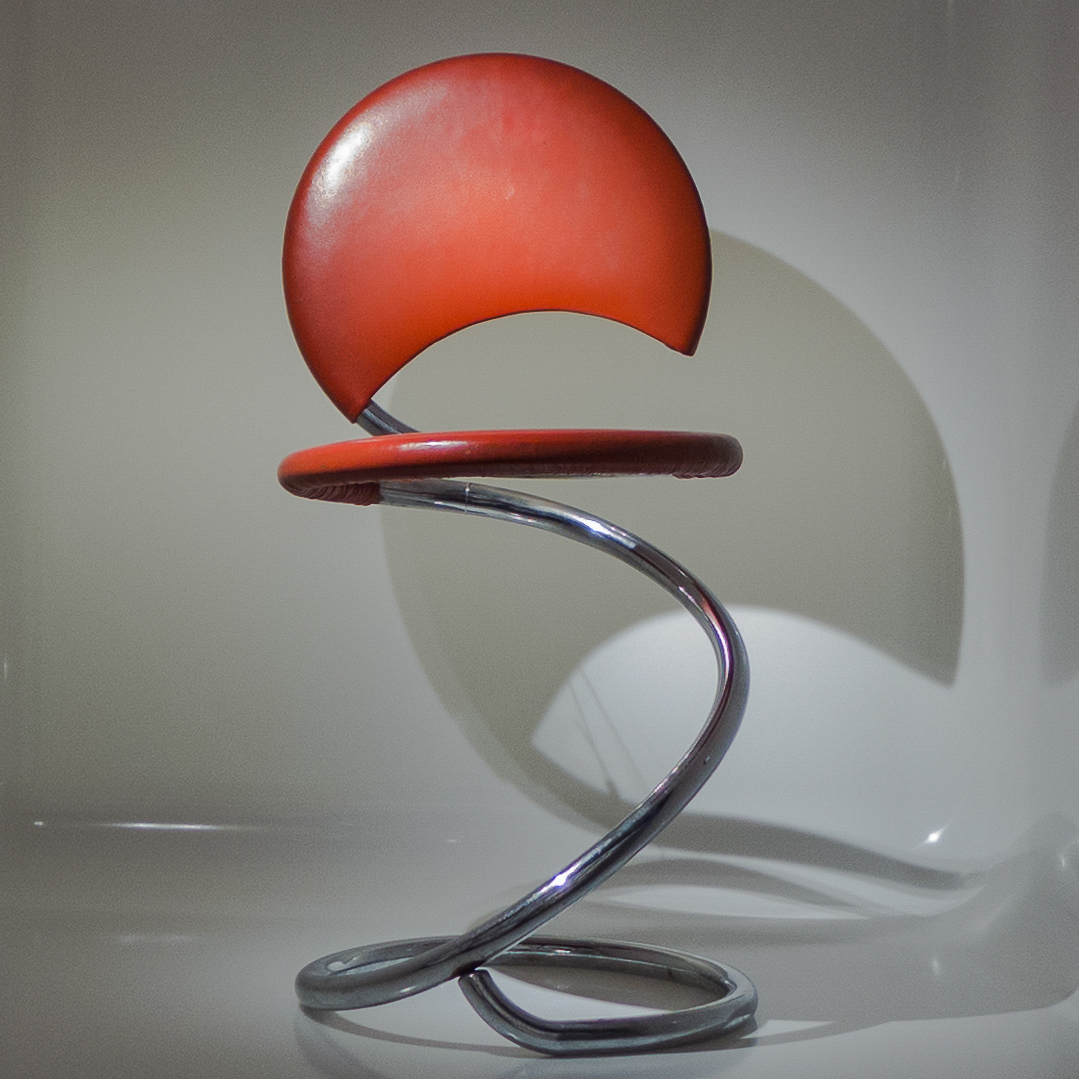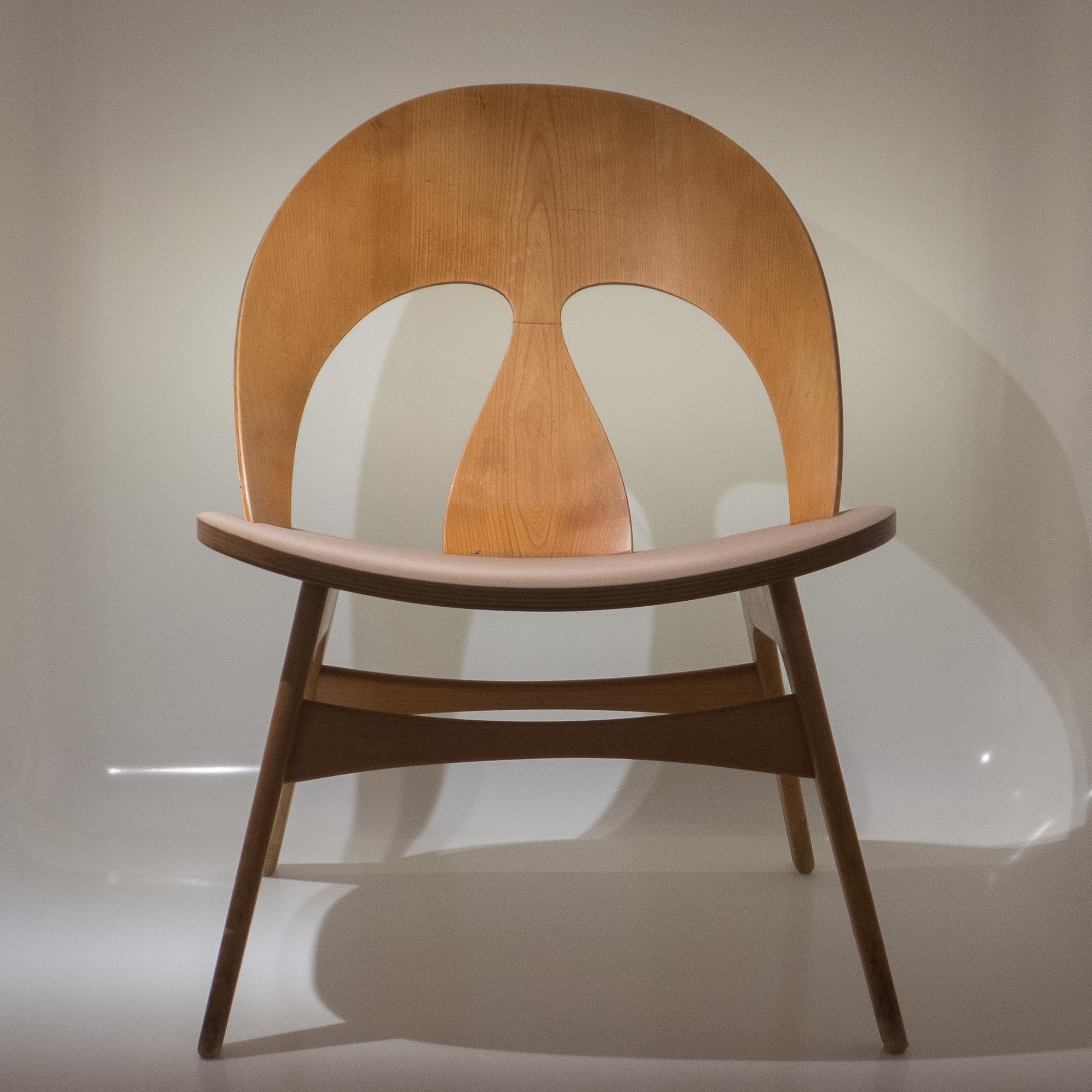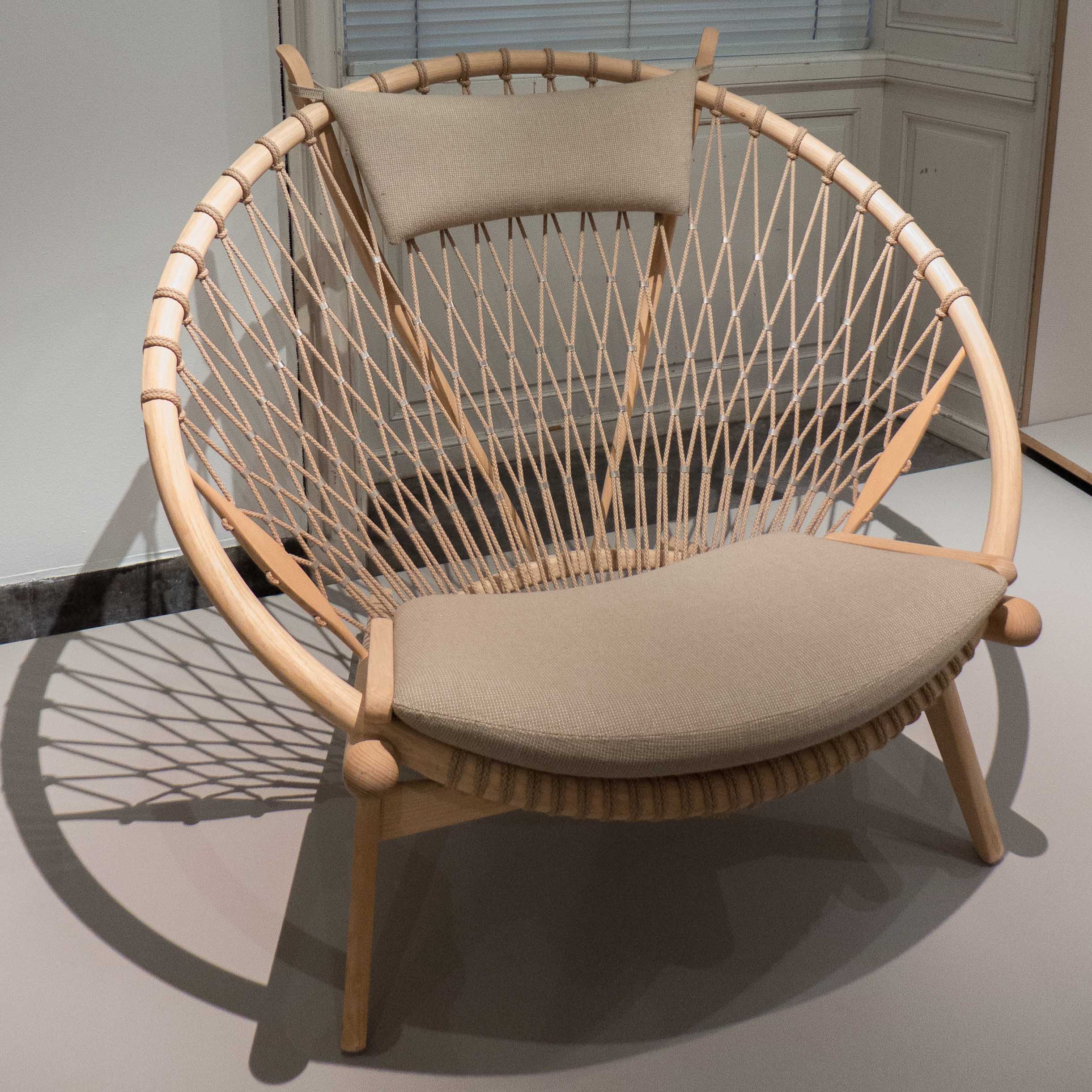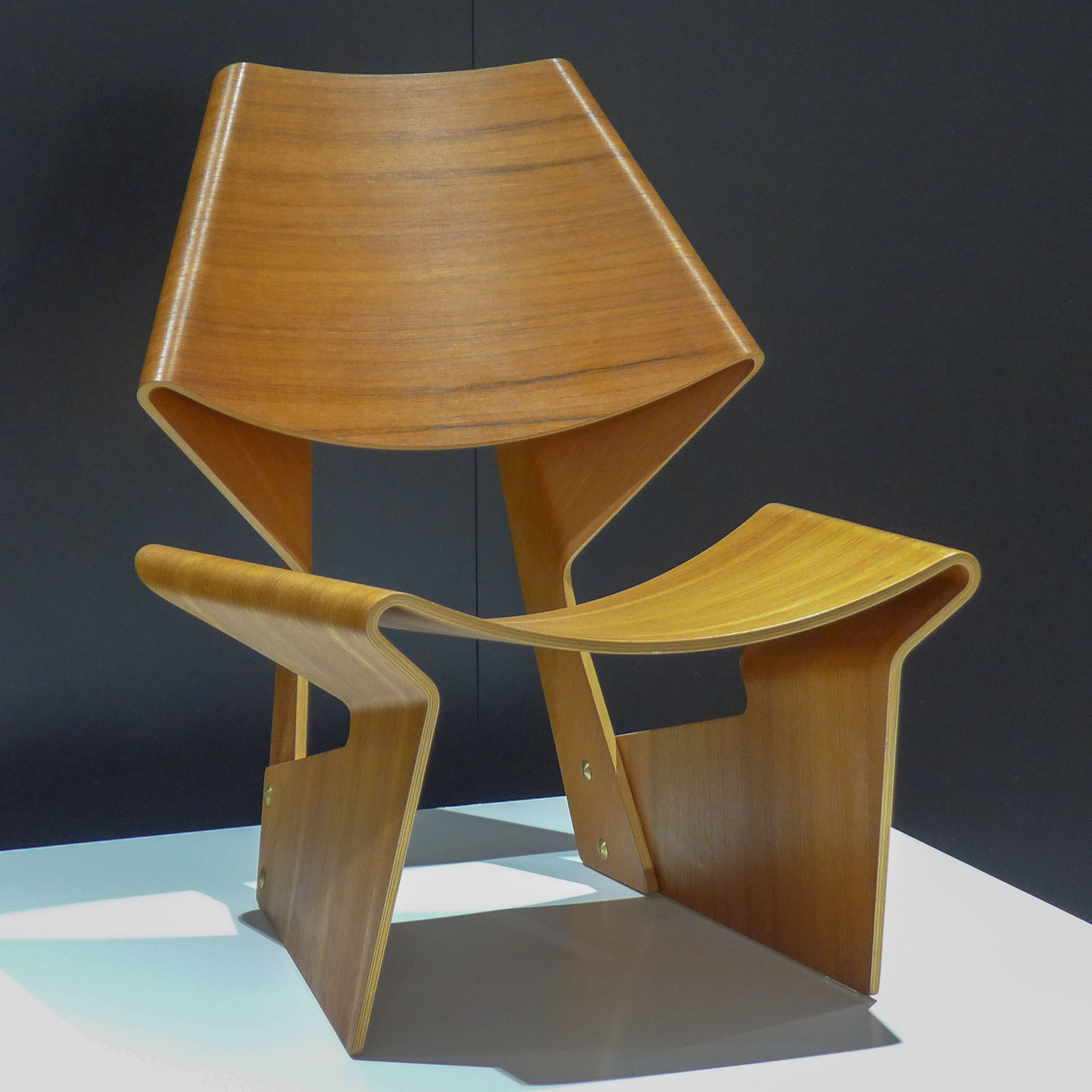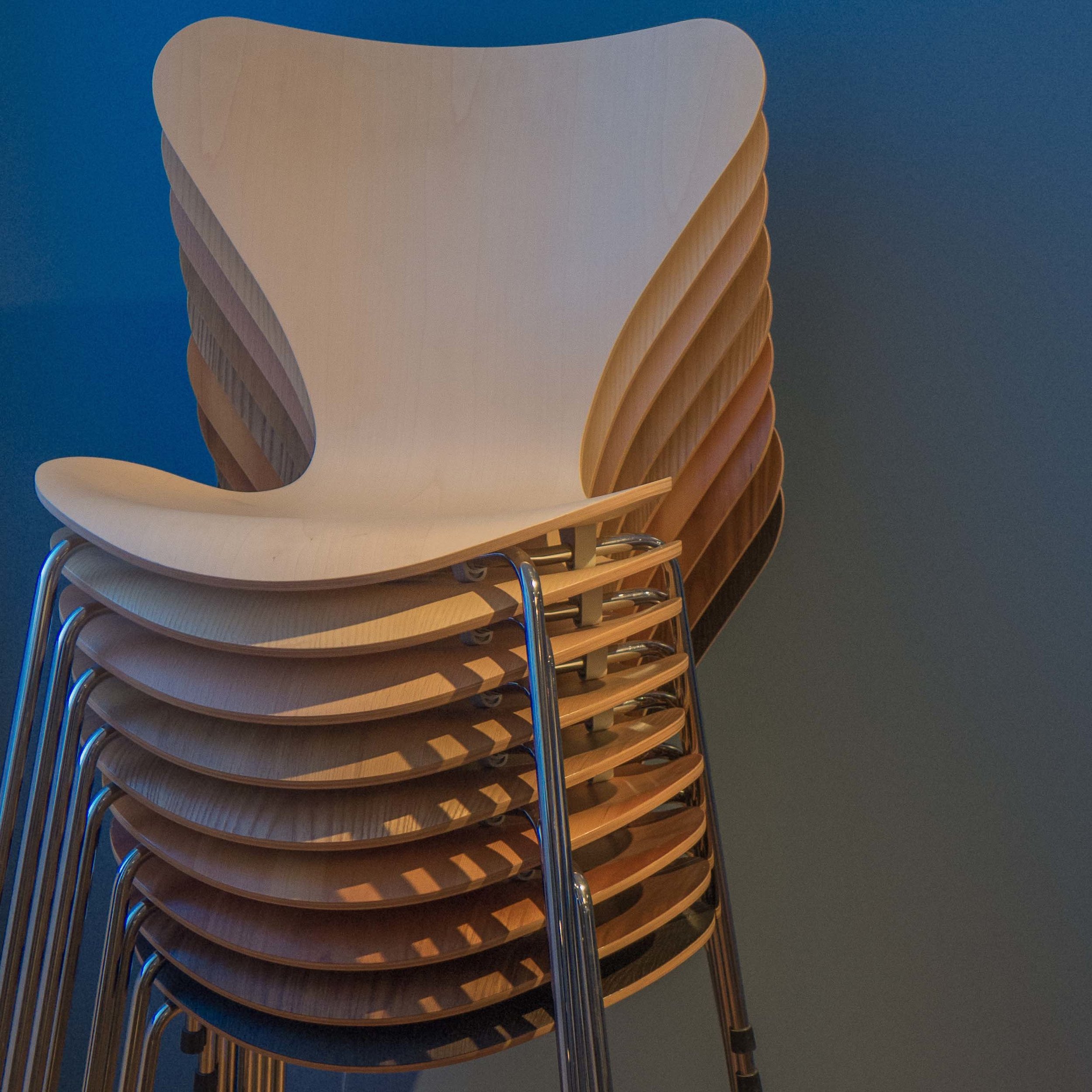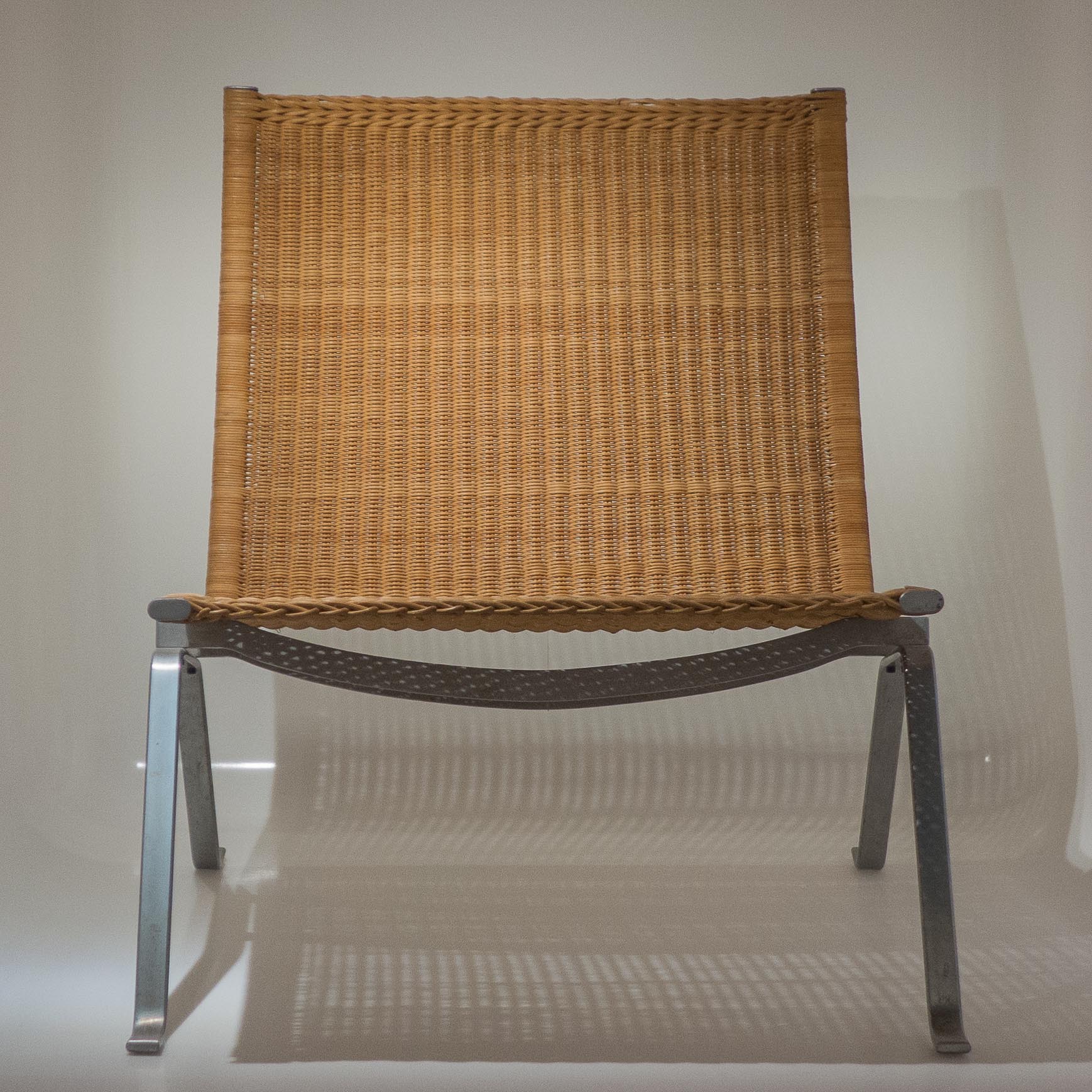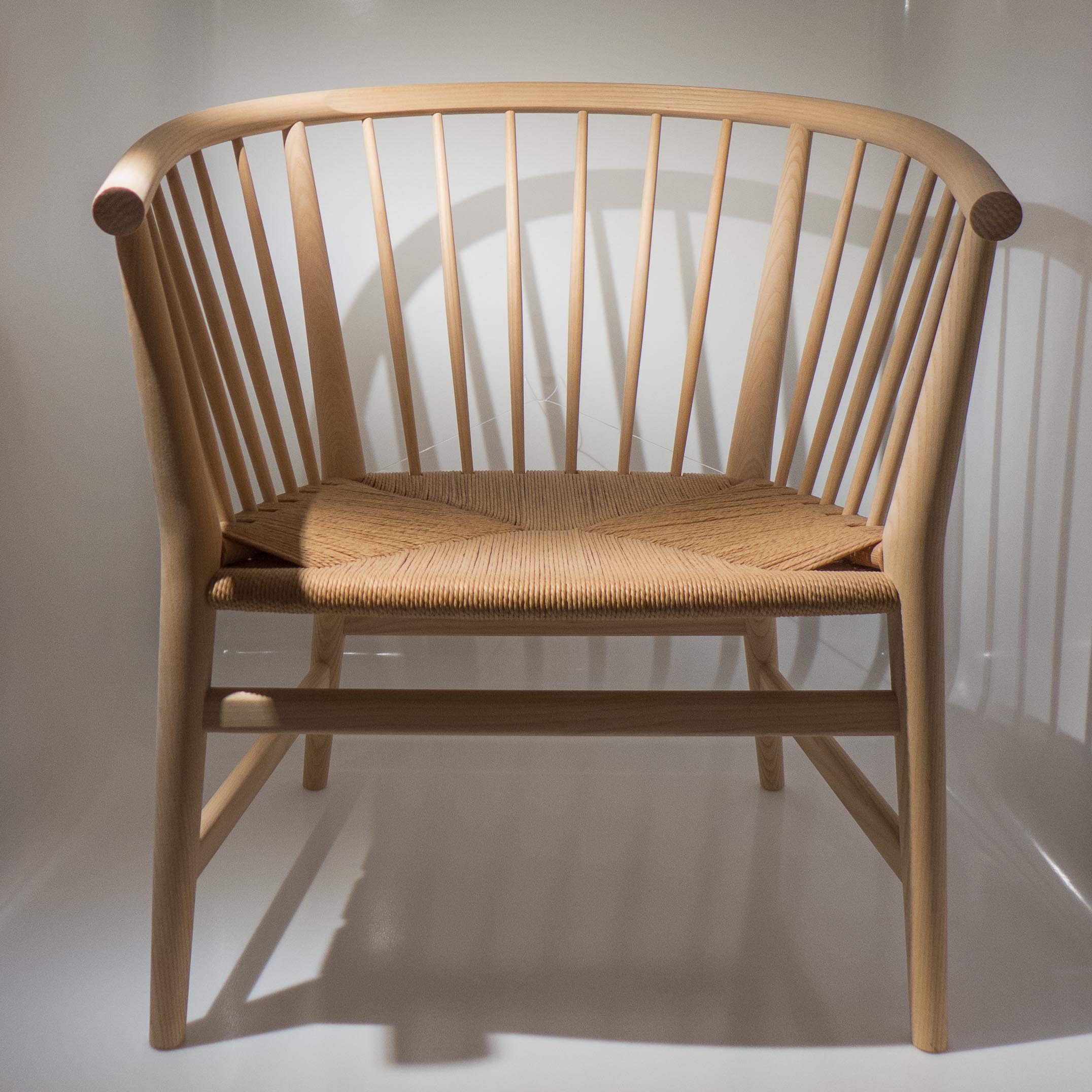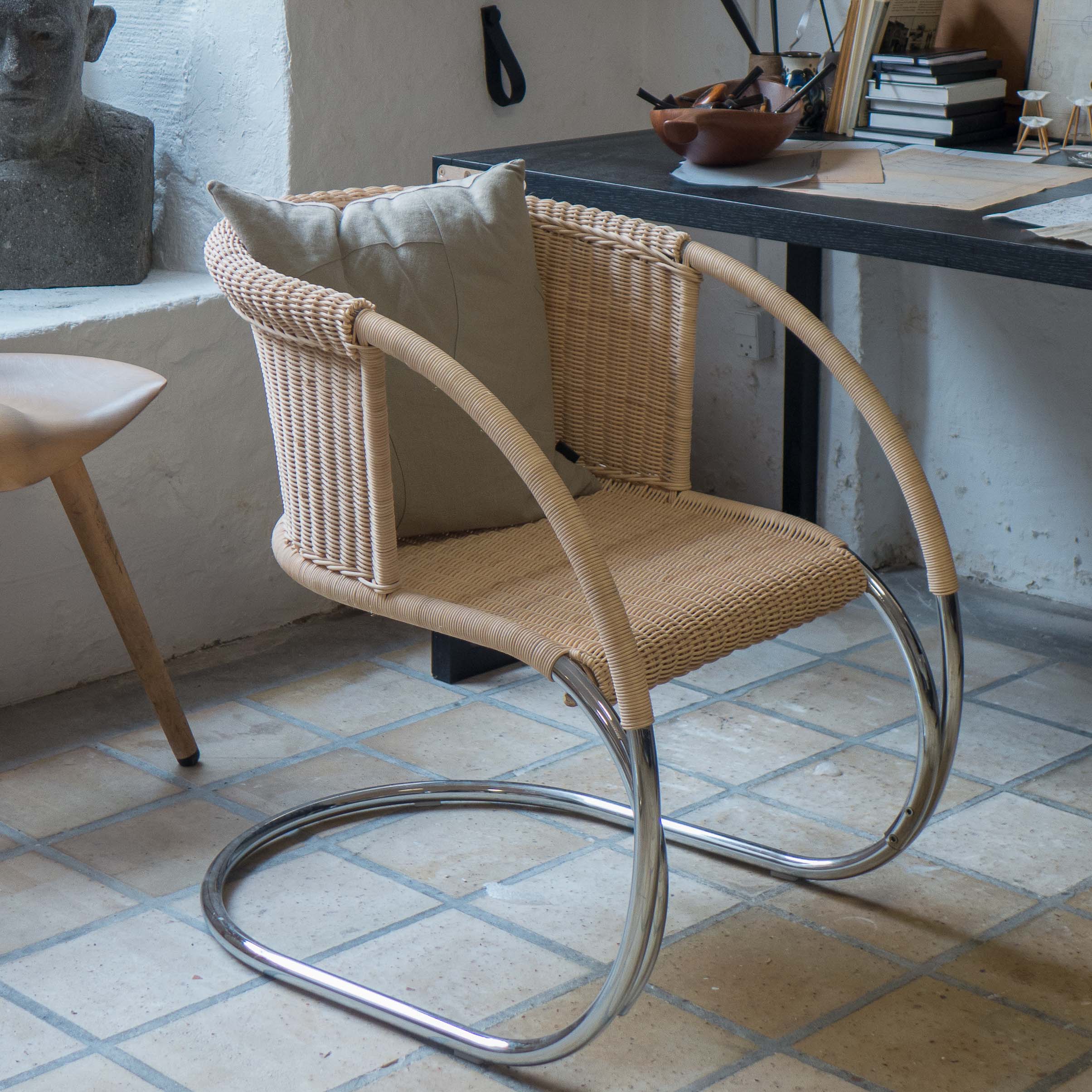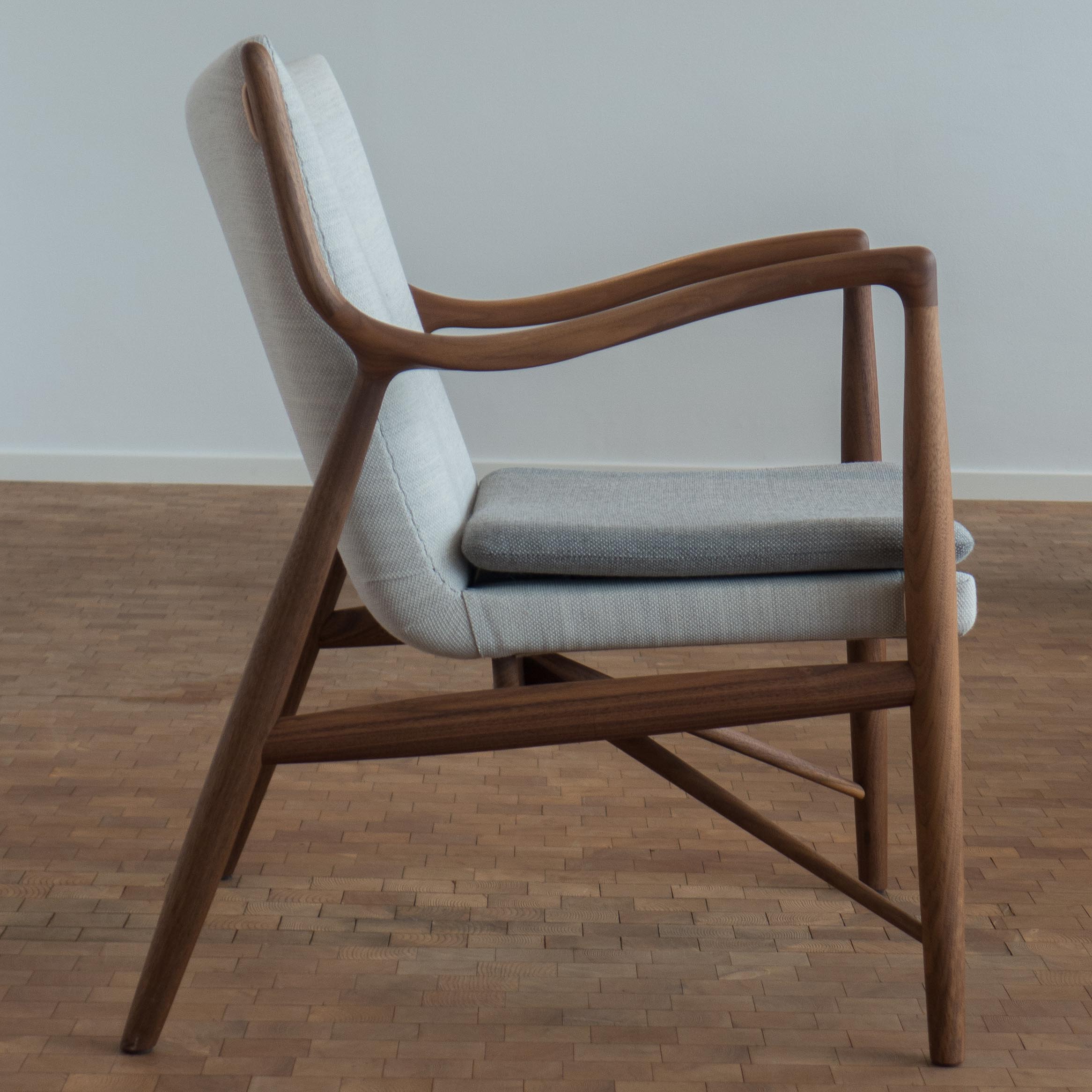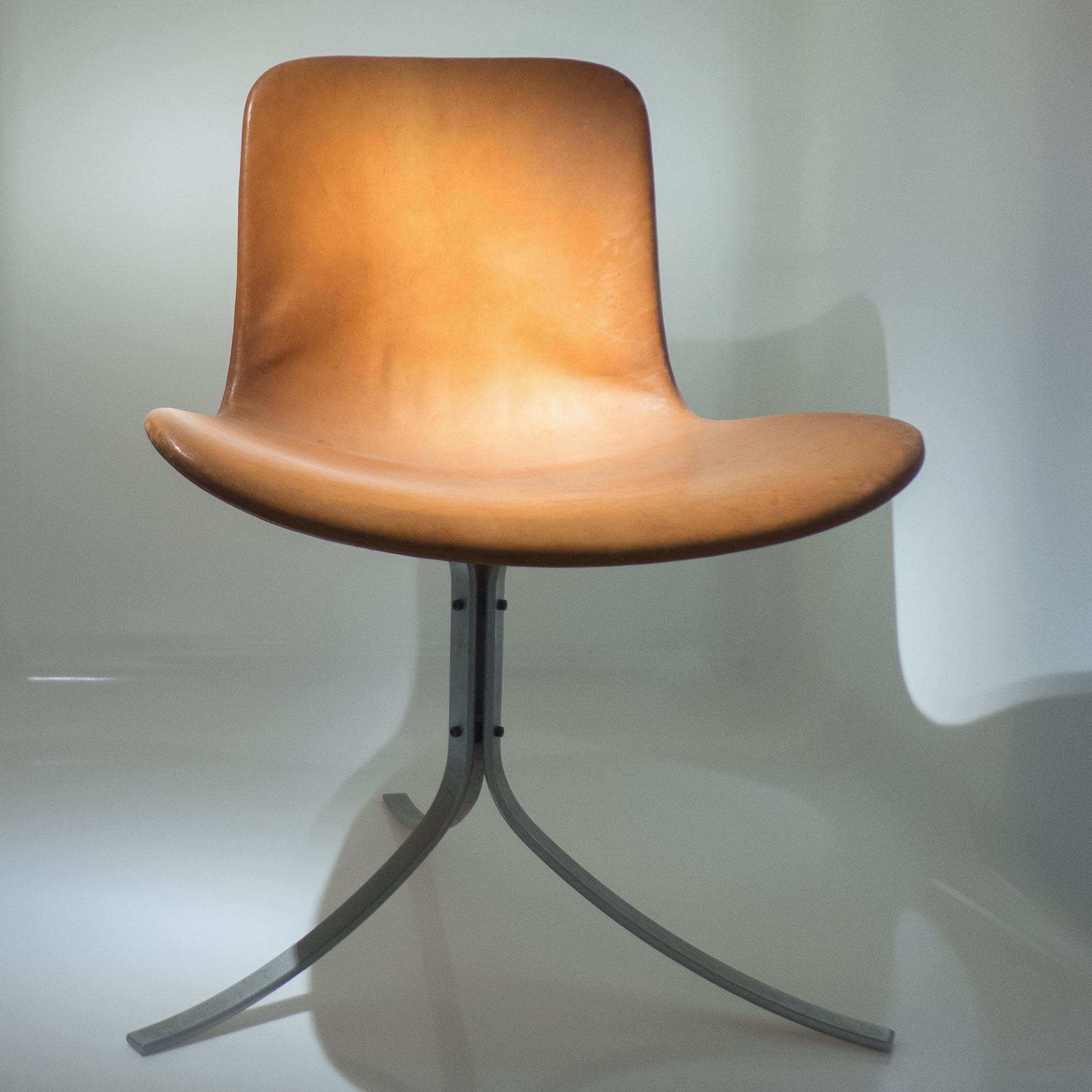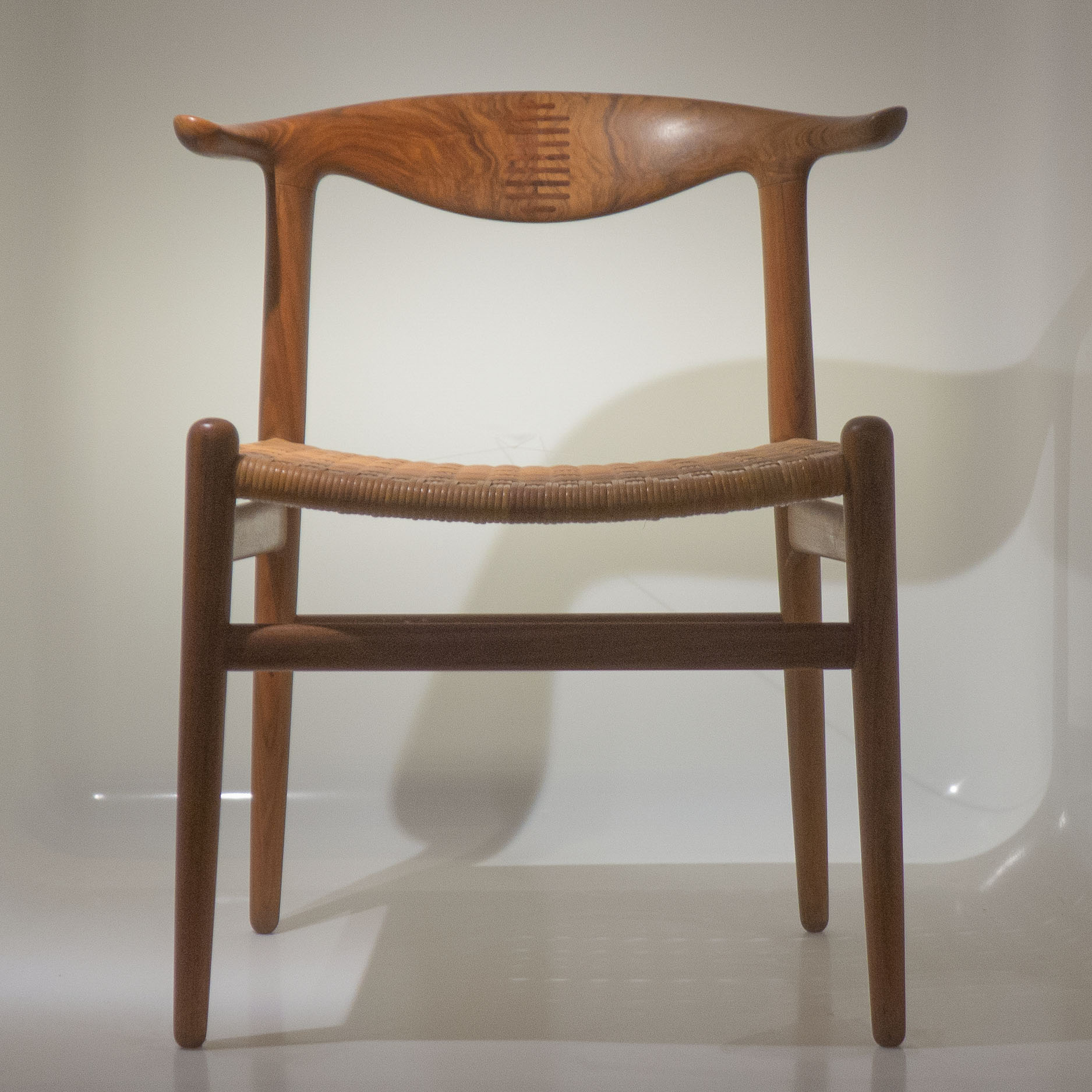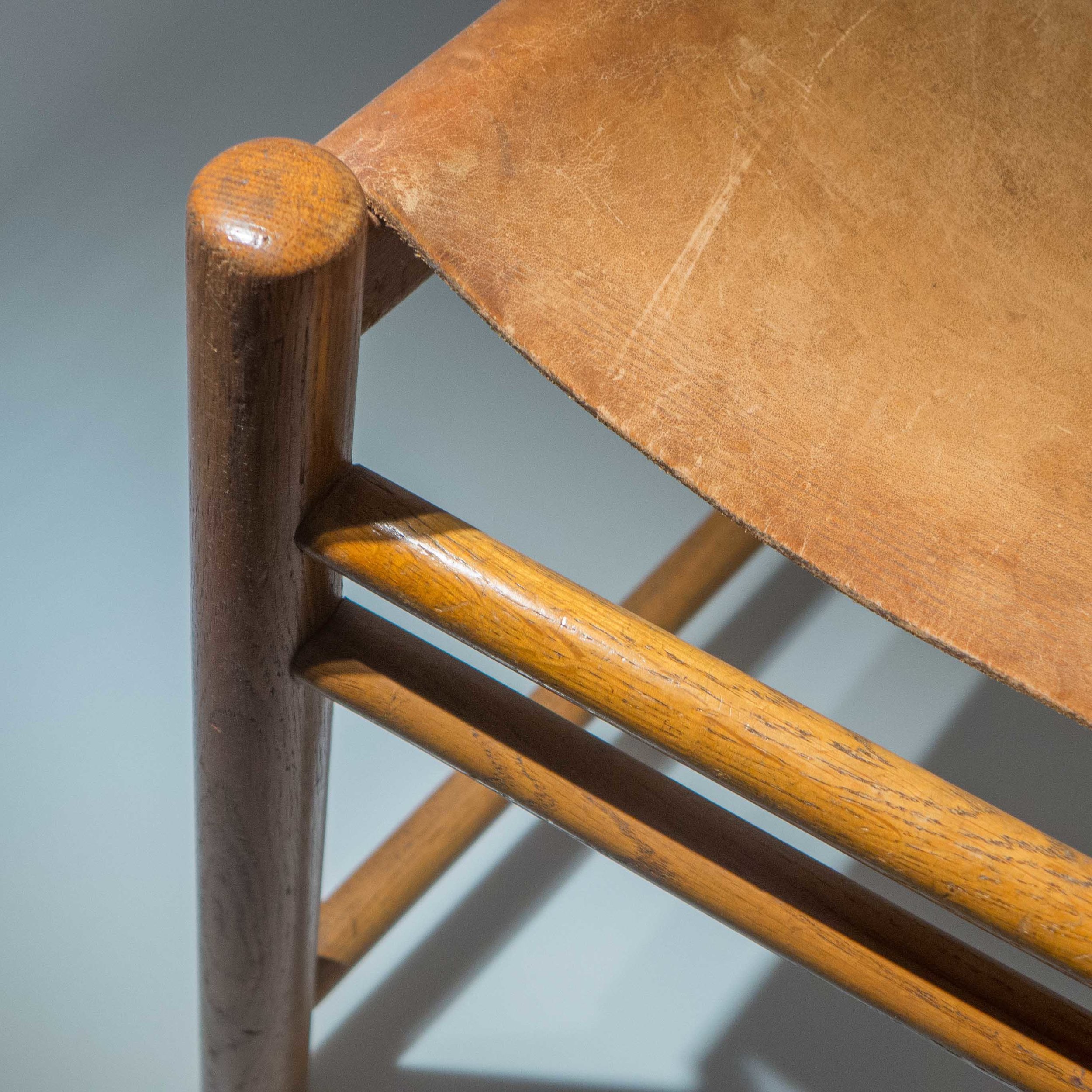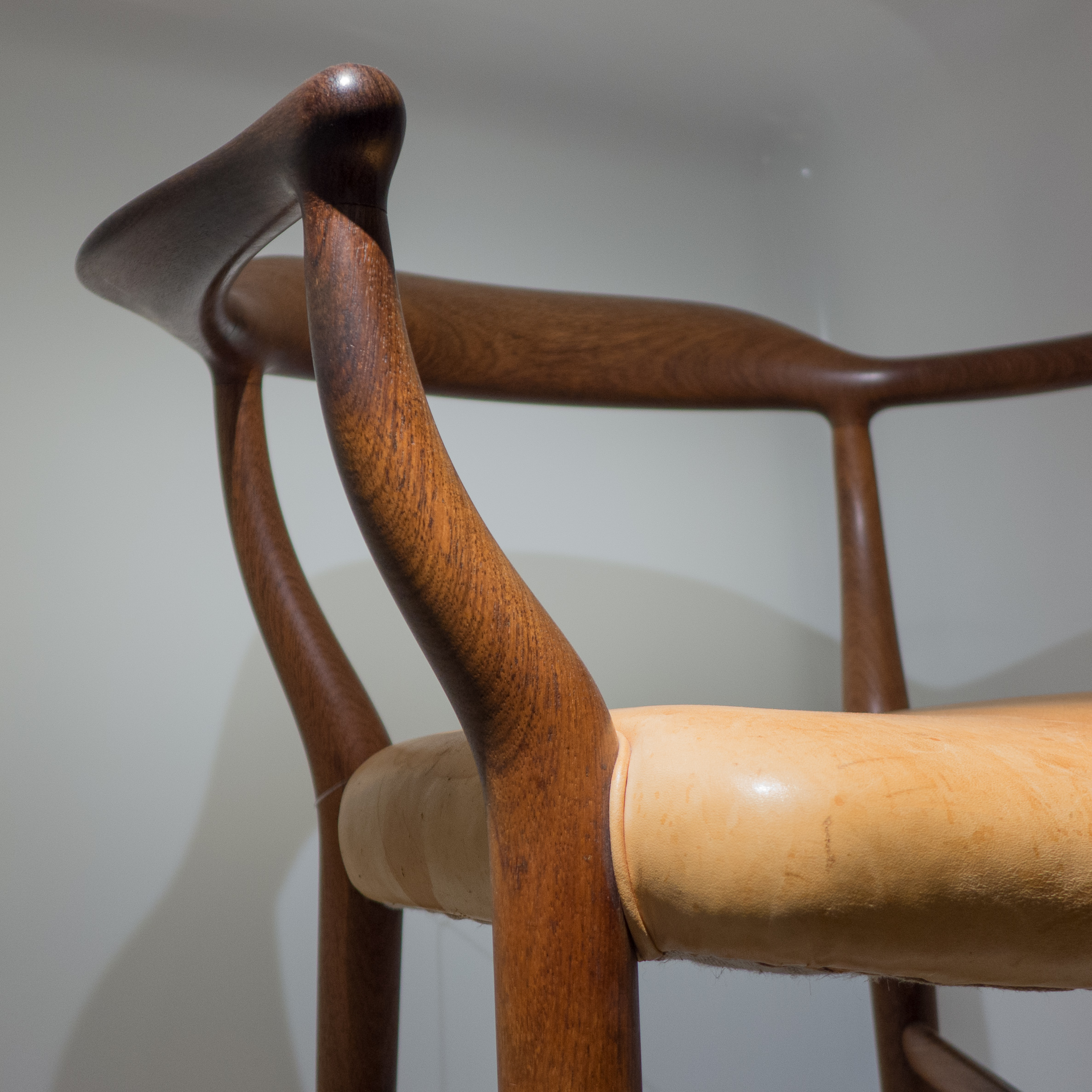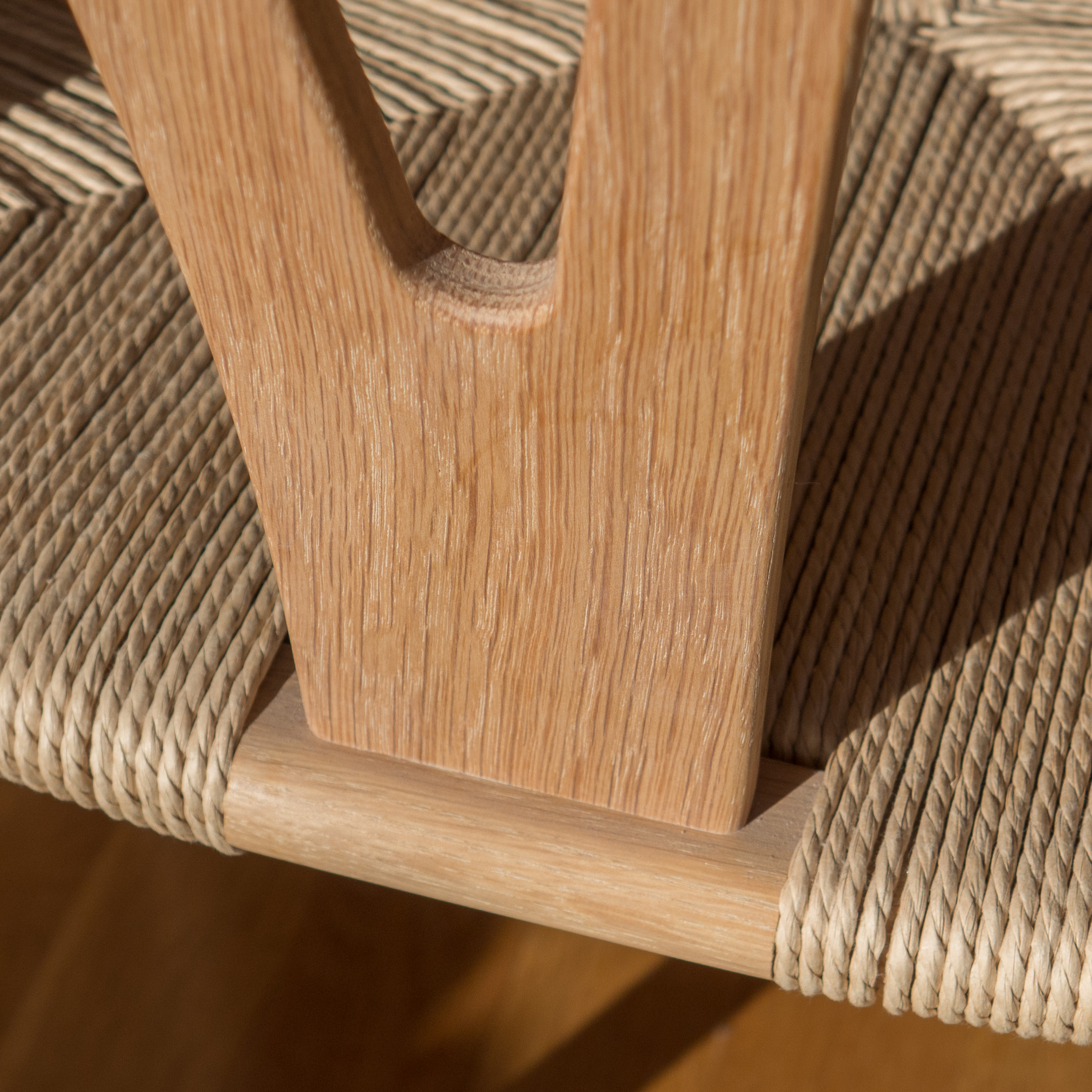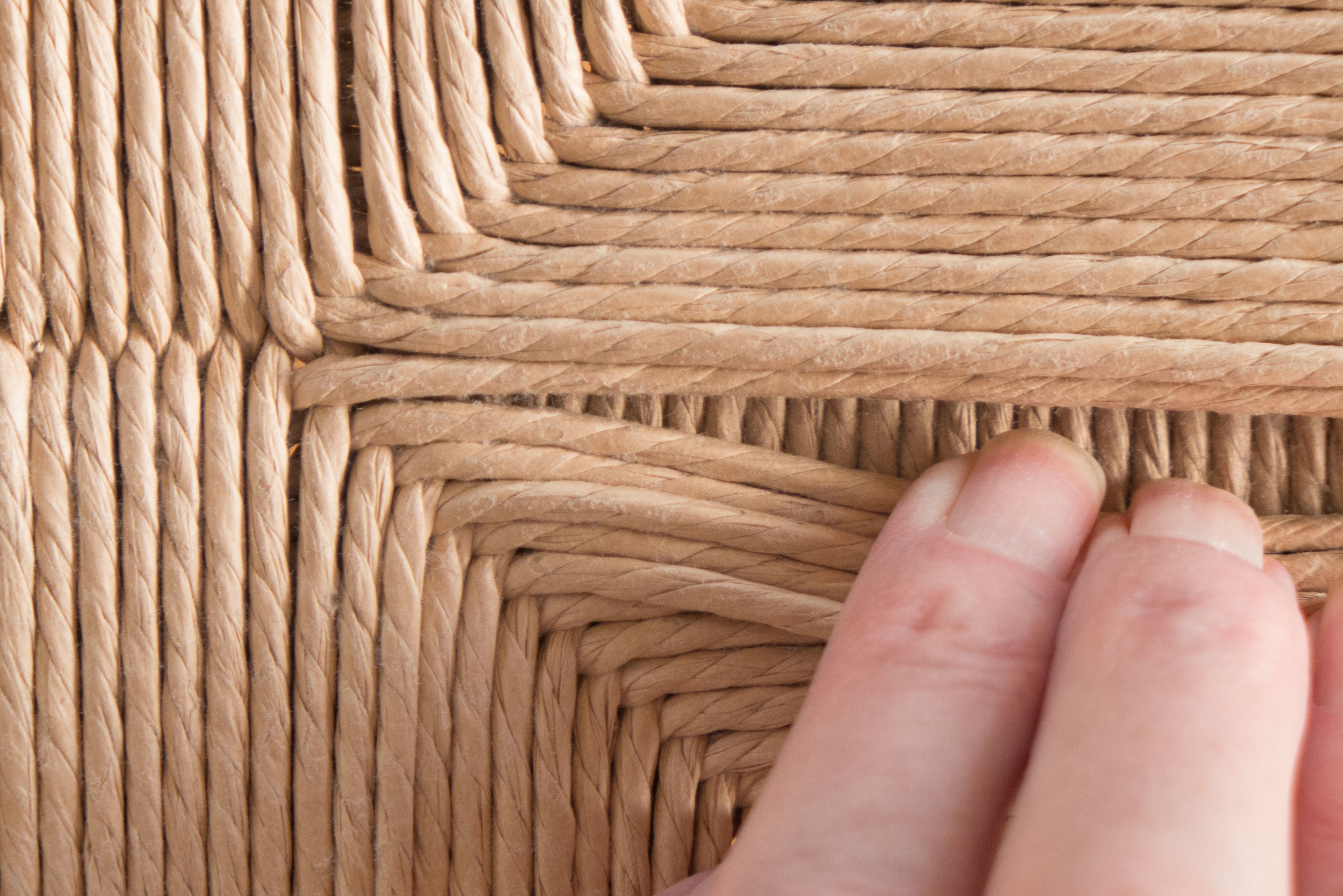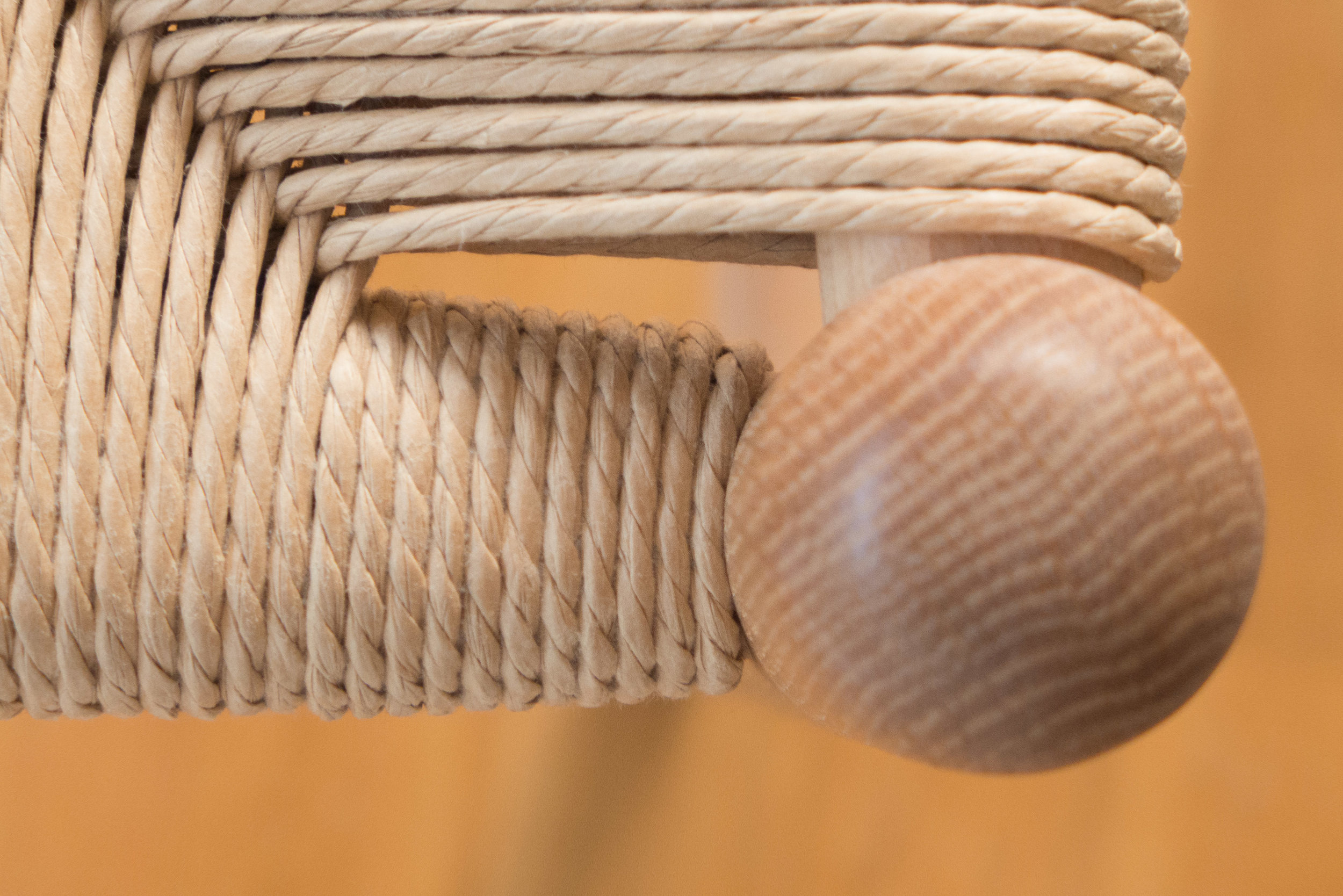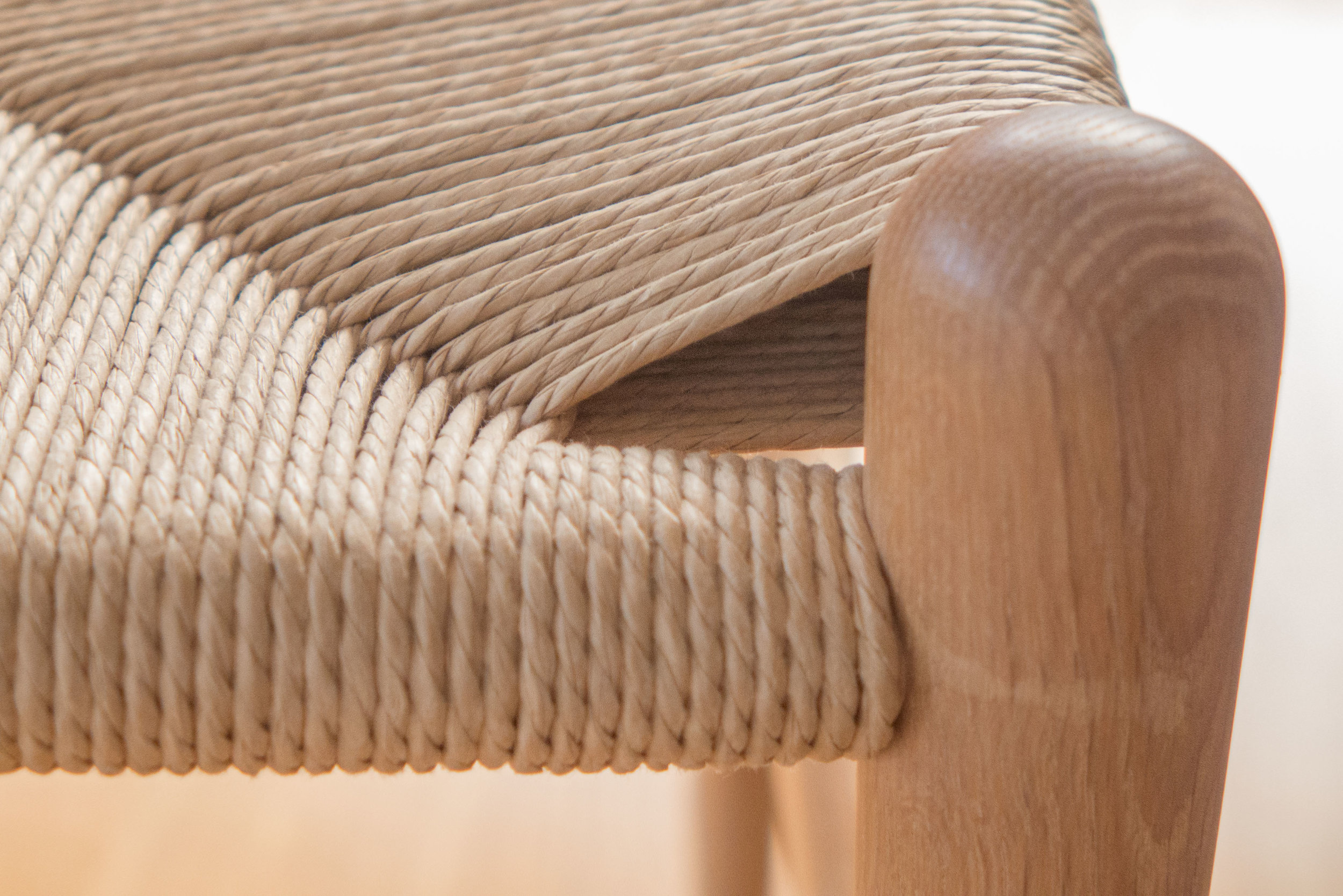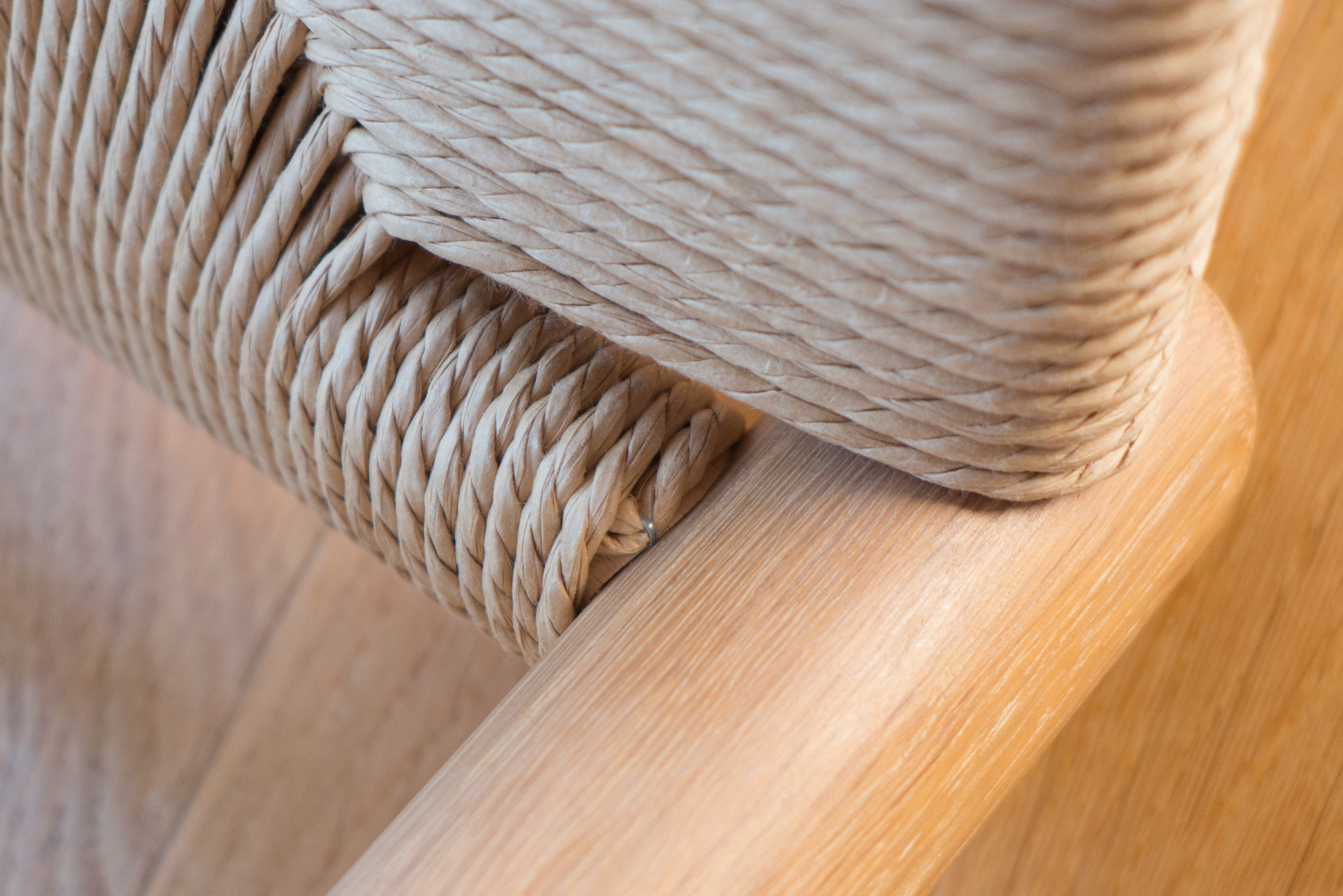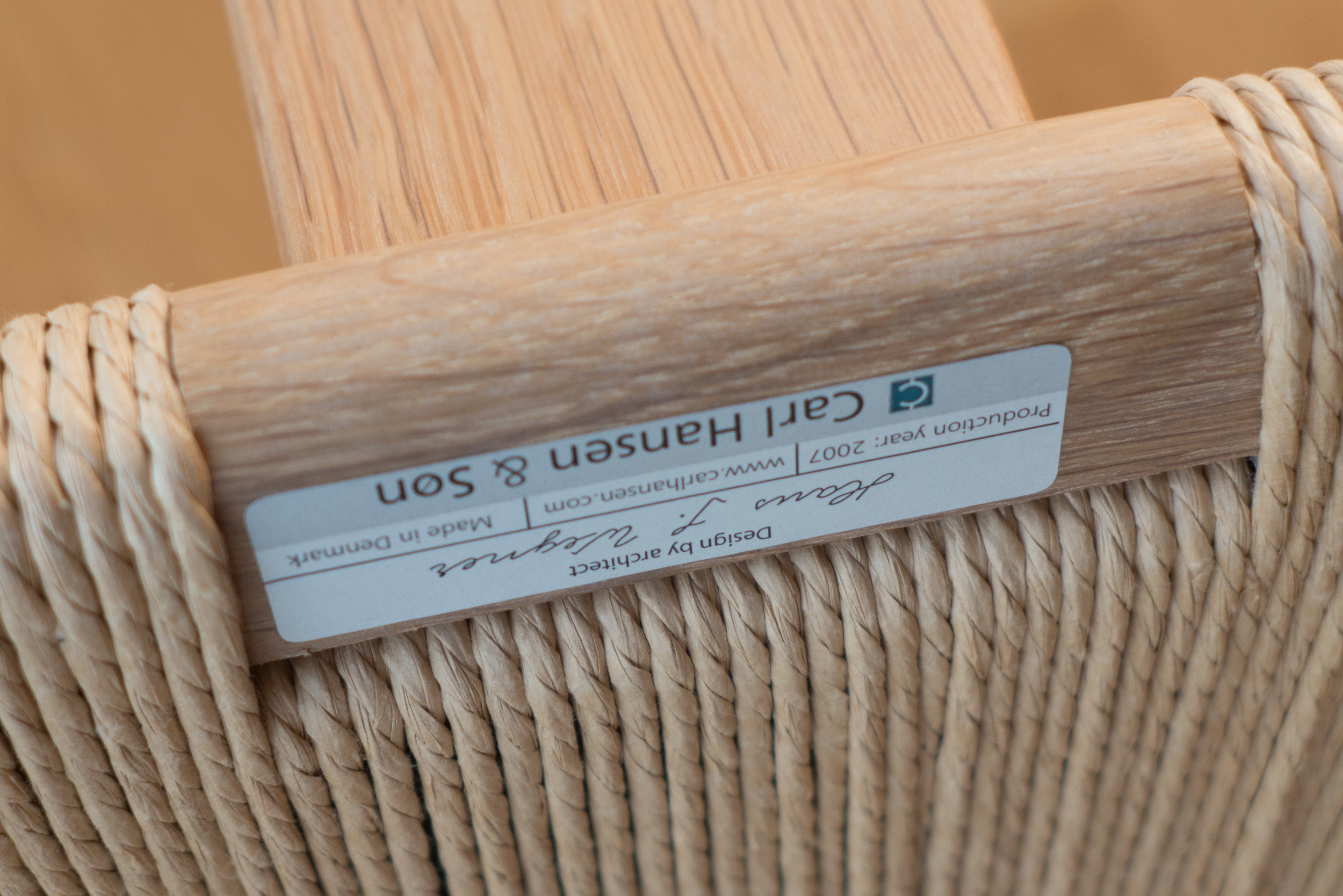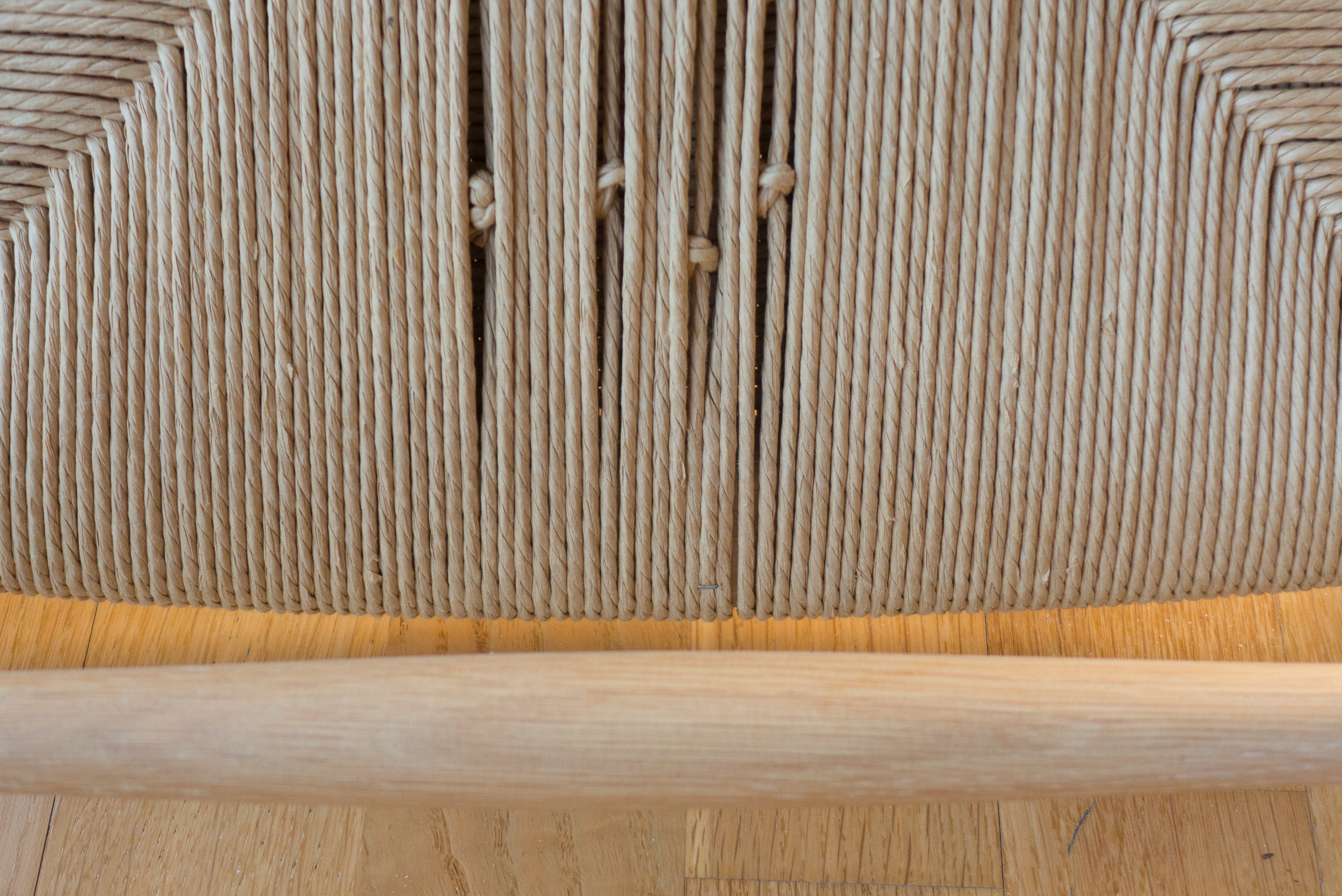The NV44 by Finn Juhl is more sculptural, more dramatic - with a stronger sense of movement - so the back rail or back rest is shaped and twisted but there is a sense that the wood is still under tension and the arms are pulled outwards and the uprights are twisted out to support the arms to form a cup shape almost wrapping around the person sitting in the chair.
There are stretchers but not between the back and front legs - as in a conventional design - but they run from the back legs and are tilted down and inwards to the centre of a deep stretcher between the front legs and that stretcher itself is curved but, surely, curved the wrong way because an arch supports and spreads weight, taking the load down and out to the ground, but a reverse arch, as here, creates the impression that the uprights are or could move together at the top. It creates a dynamic where the front of the seat itself seems almost as if it is slung between the front legs.
Obviously the arms and back rest on Wegner's design have also been cut to shape and twisted but, despite that manipulation, they seem natural and at rest. The legs of the chair are reduced down, as much as possible, by being tapered - that's why the Wegner chair is elegant - but the seat and the centre part of the leg, where the rails of the seat are joined, are strong enough and those joins, fixing the seat rail into the legs, are precisely cut and strong enough that stretchers were omitted completely.
The seat on Wegner's chair is slightly hollowed, to make it look and be more comfortable and it is wide and open - uncluttered - so it looks as if there is room to move around, however large you are, and the outward splay of the legs so wider apart at the floor than at the seat makes the chair, despite those elegant tapered legs, look stable, with the chair standing firm, calm and somehow self contained.
So is the chair by Juhl tense? If you prefer the chair designed by Finn Juhl then you might argue that the NV44 is more organic, voluptuous or sensual, and the lines and silhouette of the chair by Wegner not more pure but more mechanical.
Certainly the chairs could not have been more different commercially.
Finn Juhl was not concerned with commercial success or, actually, any compromise and here one suspects that Niels Vodder, the cabinetmakers, had to work hard to realise the design. It was presumably the complexity and the cost of the work that explains why, initially, only 12 chairs were produced.
In contrast, it's known that Hans Wegner collaborated closely with the cabinetmakers who used their skill and their experience, as he himself said, "cutting the elements down to the bare essentials" so together, they produced a chair that is not just rational but, from that process of simplification, it meant that, if not exactly made on a factory production line, the chair could be produced in relatively large numbers.
The NV44 by Juhl has much more conventional upholstery with the leather taken over the frame of the seat and that meant it needed a good upholsterer with real skill - look at the piping on the edge of the leather where it is taken around the uprights supporting the back and arms - and the work could only be done on the fully finished chair.
With the leather version of The Chair by Wegner, the leather seat and upholstery were separate and dropped into place when the chair was assembled so seat and frame could be made independently.
The design of the frame of the seat on The Chair also meant that it could be in cane … in fact the first chairs were all with cane seats and the leather covered version was introduced a year later.
That, in part, explains the success of The Chair which is still in production, made now by PP Møbler.
And it is not just the choice of seat because The Chair was one of the first chairs where the same design could be customised to take on a different character if the customer chose a different type of wood or different finishes for the wood … the chair can take on a different character for a different setting. Not just a very beautiful chair but a bit of a chameleon.
note: *
ostensibly similar but in their classification of chair types at Designmuseum Danmark, the chair by Finn Juhl is described as a Chinese Chair and Wegner's chair as a Round Arm or Klismos Chair.

